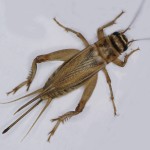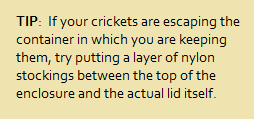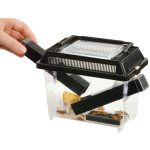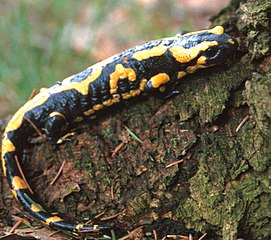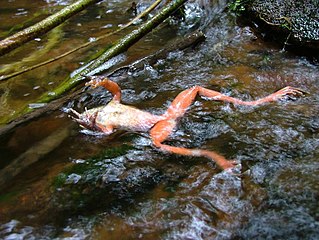
Uploaded to Wikipedia Commons by Nowis
I’ve always enjoyed keeping my herp pets, and those I’ve cared for in zoos, in outdoor ponds and exhibits. I see a wider variety of behaviors and have better breeding results, and the access to natural sunlight and wild insects is very beneficial for the animals. The arrival of winter, however, ends the fun and brings special challenges. Today I’ll cover indoor and outdoor hibernation of terrestrial and aquatic turtles and frogs, and review what to do if you wish to keep your pets active year-round.
General Considerations
Hibernation is risky under the best of circumstances. Each spring, I see evidence of winter die-offs among free-living reptiles and amphibians. The safest option for most pet owners is to keep your animals active and feeding throughout the winter.
Reptiles and amphibians native to temperate climates may not reproduce unless subjected to period of dormancy. However, in many cases a short, cool resting period will suffice – true “winter” in not needed. Details vary widely as to species, so please post below for further information.
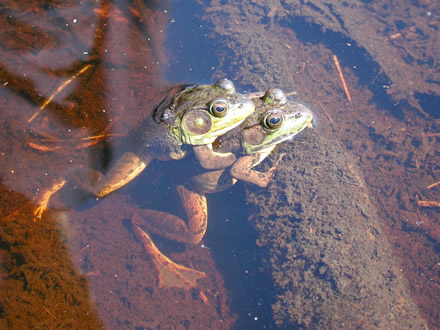
Uploaded to Wikipedia Commons by Greenfrogmaster
It has been theorized that hibernation enhances the long-term health of those species that do so in the wild, but there seems to be nothing of substance published to this effect. During my long career in zoos, I’ve kept hundreds of temperate zone species active and breeding year-round for many years. In my personal collection, a number of North American natives, including 30-45 year-old-turtles and salamanders aged 20-35 years, have never experienced dormancy.
Animals subjected to hibernation must be healthy, well-hydrated, and possessed of ample fat reserves; a vet exam in early autumn is recommended.
Depending upon the species and the size of the individual, pre-hibernation preparation should include a fast of 1-4 weeks in duration (please post below for further information).

Uploaded to Wikipedia Commons by Stephen Friedt
Outdoor Hibernation
Box Turtles and Toads
I’ve had good results by allowing Eastern Box Turtles and American Toads to dig down into the soil and leaf litter within their pens. However, the ground must be loosened in the fall, and I always add a 6-12 inch layer of fallen leaves to the surface. Note: although many people keep American Wood Turtles in largely-terrestrial pens, they spend the winter at the bottom of streams, not on land.
The pen should be exposed to rainfall year-round, as terrestrial turtles and toads require somewhat moist hibernation sites. Drainage must be provided…I’ve only left animals outdoors in bottomless pens, so that water does not pool.
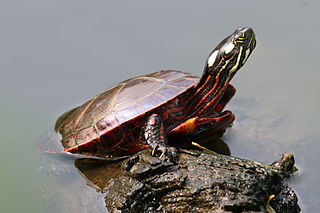
Uploaded to Wikipedia Commons by Greg Schechter
Aquatic Turtles and Frogs
Red-Eared Sliders, Painted Turtles, Green Frogs, American Bullfrogs and similar species usually overwinter underwater, beneath mud and leaf litter. Unless you are well-experienced or have expert guidance, I would not recommend trying to keep these creatures outdoors for the winter.
Dormant turtles absorb oxygen via the cloaca, while amphibians utilize diffusion through the skin. Your pond water’s oxygen level is, therefore, critical, but we have little information on any species’ exact requirements. Water depth is also a concern.
Aerators and surface heaters designed for use with koi and goldfish can be employed if you wish to keep your aquatic pets outdoors. You can read more about general winter pond preparations on ThatFishBlog…please see the links below.
I have had success in overwintering some aquatic species outdoors (i.e. Sliders, Snappers, Musk, Mud, Spotted and Painted Turtles, Green and Bullfrogs, Northern Watersnakes) but my best results were in large outdoor zoo exhibits rather than backyard ponds.
In both my pens and natural situations, I was several times surprised to find American Bullfrogs and Green Frogs hibernating on land – they missed the “go to the pond memo”, I guess!
Indoor Hibernation
Indoor hibernation is a bit less risky in some ways, as you can monitor the animals closely and avoid the extreme conditions that occur outdoors. However, it is still not advisable for pet-keepers lacking considerable experience.
American Box Turtles can be over-wintered in moist sphagnum moss at 38-42 F. A refrigerator designated for this purpose is ideal, but attics, garages and similar areas can be used if temperatures are appropriate. American Toads and their relatives can be maintained in the same manner, but they usually remain active and feeding down to 55 F or so, and so are easier to “keep awake”.
Keeping your pets in an unheated or extra-cool room of the house is not satisfactory. At temperatures too low for normal activity, yet above those needed for dormancy (i.e. 50-65 F for many temperate zone species), food reserves are used and the immune system fails to protect from respiratory and other infections.
While aquatic turtles and frogs have been successfully over-wintered in aerated water at 40 F, I would not advise taking the risk.
Avoiding Hibernation
Spotted, Wood, Box and Painted Turtles, and others with similar life histories, may be kept active at their normal temperatures year-round. I tend to maintain them at the lower end of their normal active range, but provide a warmer basking site. If the animals are in good health, a dip to 60 F at night will do no harm (different species vary in this regard – please post below for specific information).
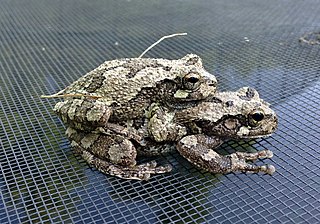
Uploaded to Wikipedia Commons by Fredlyfish4
Temperate zone frogs and toads, including Fire-bellied Toads, American Bullfrogs, Gray Treefrogs and Leopard Frogs remain active and feeding at normal to low (i.e. 55 F) room temperatures. The change from summer highs seems to do them good, and in some cases (i.e. Fire-bellied Toads), may also stimulate breeding behavior.
Tortoises
Russian and Greek Tortoises, along with several other species, experience cool to cold winters in some portions of their natural ranges. However, it is difficult to successfully induce dormancy among captives, either in the home or outdoors. Please post below if you wish to attempt this, and I’ll send along specific information.
Internal Controls on Behavior
Circadian rhythms, which might be likened to “internal clocks”, govern behavior to varying degrees. For example, Indian Gharials under my care for 14 years refused food in tune with the cool season in their native range, despite being kept at optimal temperatures (they lost virtually no weight during the 3 month period, however).
Among pets, wild-caught individuals of certain species may refuse food and become less active even when kept warm during the winter. In some cases, captive-born youngsters of the same animals will feed normally all winter long. Captive born individuals of other species may enter semi-dormancy despite being many generations removed from the wild. For species with large ranges, the origin of the parent stock may be important. I’ve had experience with this scenario in a number of reptiles and amphibians, and am very interested in learning more…please post your observations and questions below.
Further Reading
Preparing Your Pond for Winter
Bullfrogs in Backyard Ponds
Red-eared Sliders in Backyard Ponds
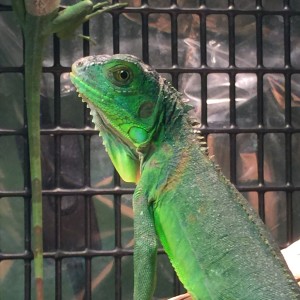 Fall is here again at That Fish Place – That Pet Place. The leaves are changing color and, more importantly, the temperatures are dropping. Chompers is packing his bags for winter migration, and Bernie is digging out all of his old doggy sweaters. They already have their plans to stay warm this winter, do your reptiles?
Fall is here again at That Fish Place – That Pet Place. The leaves are changing color and, more importantly, the temperatures are dropping. Chompers is packing his bags for winter migration, and Bernie is digging out all of his old doggy sweaters. They already have their plans to stay warm this winter, do your reptiles?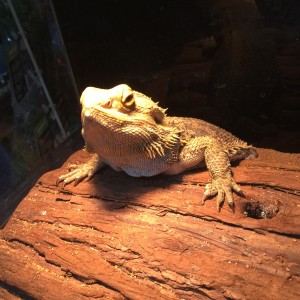 Know the appropriate temperature ranges for your pet
Know the appropriate temperature ranges for your pet That Reptile Blog – Reptile, Amphibian and Exotic Pet Care and Information
That Reptile Blog – Reptile, Amphibian and Exotic Pet Care and Information


